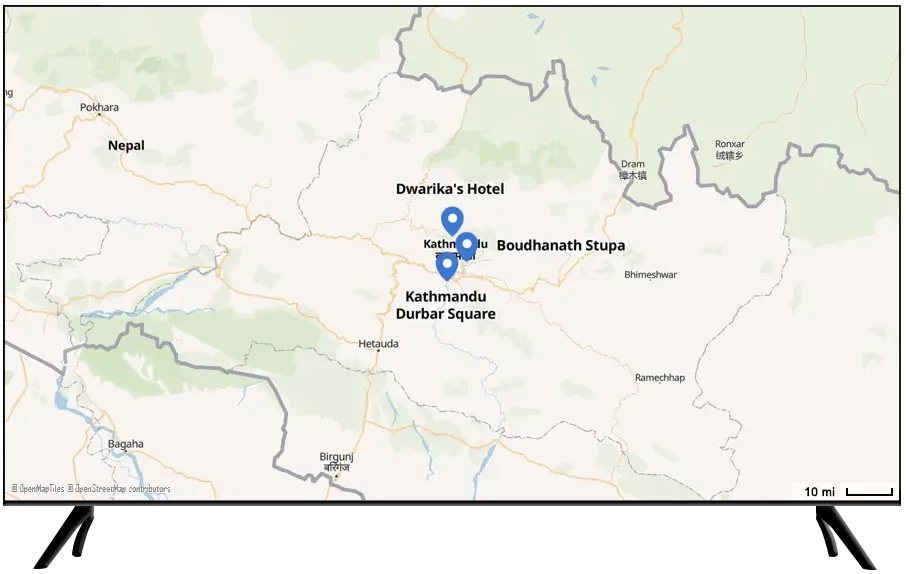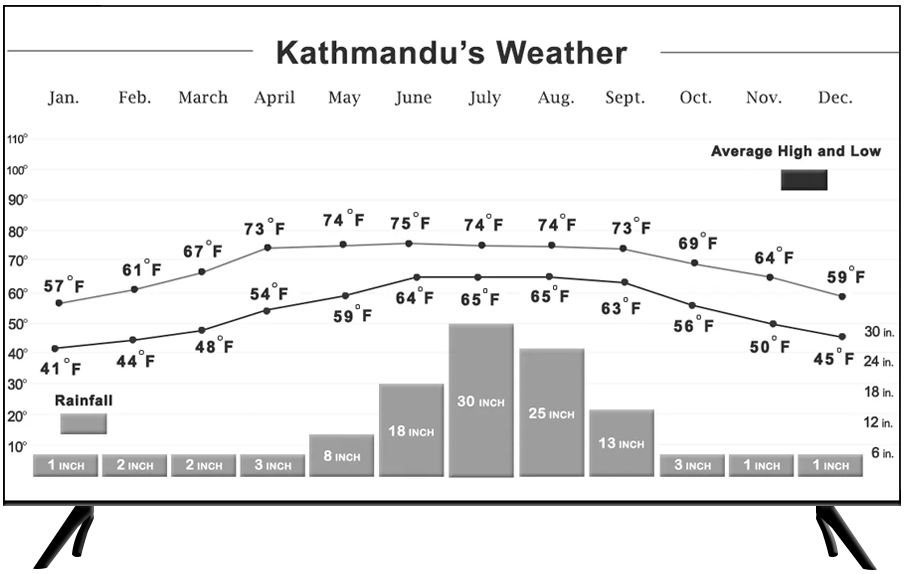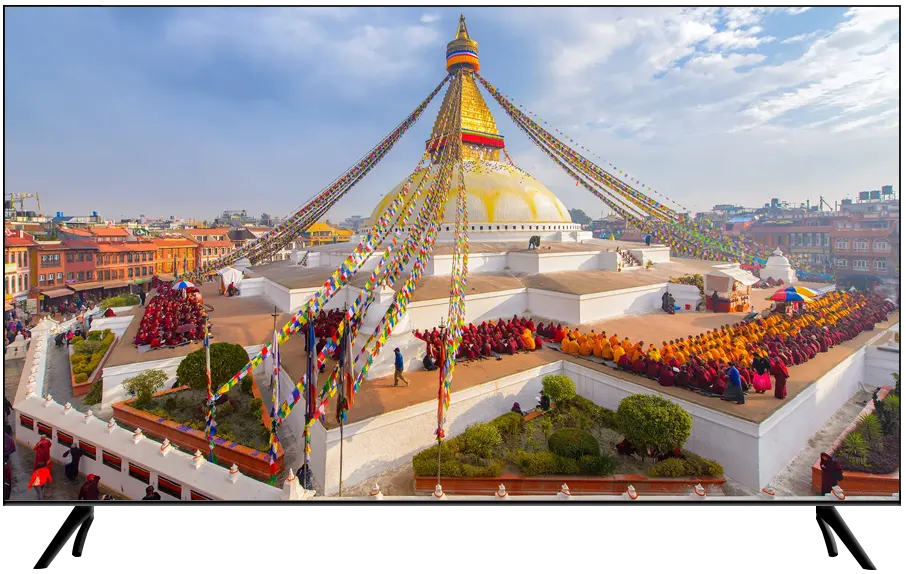


Day 9. Kathmandu
Overnight – Dwarika's Hotel
Weather permitting, you will experience the Everest flight this morning with private assisted transfers between the lodge and the airport. If weather conditions result in the flight getting cancelled, it can be substituted for the following day.
Continue your tour of Kathmandu city with the Boudhanath Stupa, a UNESCO World Heritage Site that is one of Kathmandu’s two landmarks. This is the largest stupa in Nepal and a major pilgrimage destination for Buddhists. Said to have been built just after Lord Buddha’s departure from the world about two and a half millennia ago, the stupa has multiple legends associated with it in both Nepalese and Tibetan Buddhism. The influx of Tibetan Buddhists escaping China’s control over the last six decades has transformed the area around it as many of them have settled here, and have also built over 50 Gompa’s (monasteries) around the Stupa. Exploring the stupa and its colorful surrounding areas is a highlight for any visitor to Kathmandu. The spire of the stupa and a few other areas received some damage in the 2015 earthquake but this has now been repaired.
After the Stupa you will enjoy a walk in Thamel, the main bazaar area of Kathmandu. Thamel is also where a lot of the inexpensive hostels and other budget lodging options are located, and its colorful alleys are always abuzz with activity. Locals and backpackers flock to this area to shop for a vast range of products, from daily requirements to souvenirs, from clothing to footwear to toys. There are also a large number of dining and street food options for the backpackers, ranging from local Nepalese delicacies to western fare.
After breaking for lunch, you are driven to the Kathmandu Durbar Square, another UNESCO World Heritage Site. A few of the ancient monuments here were damaged during the earthquake, but much of it remains intact. The monuments in the Square were built between the 12th and 18th centuries, and this is where, even today, most of the state ceremonies are performed. Start with a visit to the beautiful 17th Century three-story building called Kumari Ghar, which means the abode of the Living Goddess. Guests may want to spend a couple of minutes researching this ancient tradition before their visit. If you are fortunate, you may be graced with the anointed child’s appearance in an upstairs window. You will then explore the ancient square and its many monuments, with the opportunity to pose in front of Kal Bhairav, an ancient and impressive stone relief of Lord Shiva in one of his most fearsome manifestations.
Weather permitting, you will experience the Everest flight this morning with private assisted transfers between the lodge and the airport. If weather conditions result in the flight getting cancelled, it can be substituted for the following day.
Continue your tour of Kathmandu city with the Boudhanath Stupa, a UNESCO World Heritage Site that is one of Kathmandu’s two landmarks. This is the largest stupa in Nepal and a major pilgrimage destination for Buddhists. Said to have been built just after Lord Buddha’s departure from the world about two and a half millennia ago, the stupa has multiple legends associated with it in both Nepalese and Tibetan Buddhism. The influx of Tibetan Buddhists escaping China’s control over the last six decades has transformed the area around it as many of them have settled here, and have also built over 50 Gompa’s (monasteries) around the Stupa. Exploring the stupa and its colorful surrounding areas is a highlight for any visitor to Kathmandu. The spire of the stupa and a few other areas received some damage in the 2015 earthquake but this has now been repaired.
After the Stupa you will enjoy a walk in Thamel, the main bazaar area of Kathmandu. Thamel is also where a lot of the inexpensive hostels and other budget lodging options are located, and its colorful alleys are always abuzz with activity. Locals and backpackers flock to this area to shop for a vast range of products, from daily requirements to souvenirs, from clothing to footwear to toys. There are also a large number of dining and street food options for the backpackers, ranging from local Nepalese delicacies to western fare.
After breaking for lunch, you are driven to the Kathmandu Durbar Square, another UNESCO World Heritage Site. A few of the ancient monuments here were damaged during the earthquake, but much of it remains intact. The monuments in the Square were built between the 12th and 18th centuries, and this is where, even today, most of the state ceremonies are performed. Start with a visit to the beautiful 17th Century three-story building called Kumari Ghar, which means the abode of the Living Goddess. Guests may want to spend a couple of minutes researching this ancient tradition before their visit. If you are fortunate, you may be graced with the anointed child’s appearance in an upstairs window. You will then explore the ancient square and its many monuments, with the opportunity to pose in front of Kal Bhairav, an ancient and impressive stone relief of Lord Shiva in one of his most fearsome manifestations.

